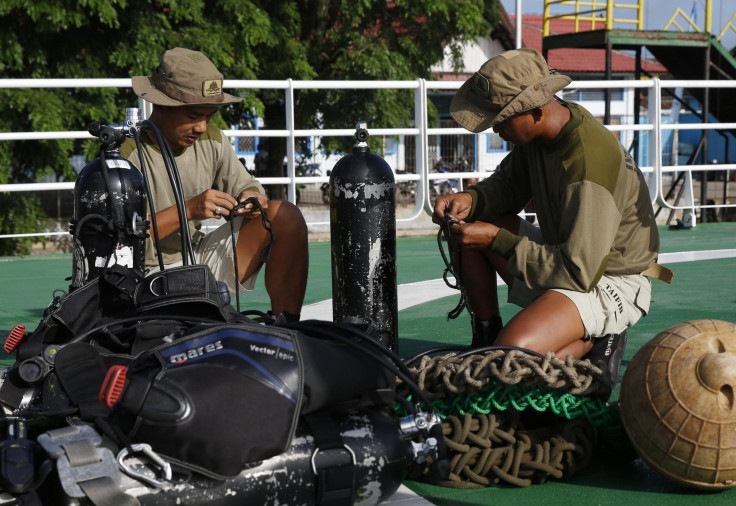AirAsia Flight 8501: Investigators Believe 'Unbelievably' Steep Climb May Have Caused Crash

Harsh weather conditions are hampering the recovery operation for AirAsia Flight 8501, as investigators are working on a theory that an “unbelievably” steep climb by the aircraft may have caused it to stall and crash, according to reports.
An unidentified source close to the investigation told Reuters that data transmitted by the flight just before it lost contact with air traffic controllers suggested that the aircraft may have climbed sharply to avoid a storm in its path, possibly causing the crash.
"So far, the numbers taken by the radar are unbelievably high. This rate of climb is very high, too high. It appears to be beyond the performance envelope of the aircraft," the source said.
Geoffrey Thomas, an aviation expert, told the Telegraph: "I have a radar plot which shows [the pilot] at 36,000 feet and climbing at a speed of 353 knots, which is approximately 100 knots too slow ... if the radar return is correct, he appears to be going too slow for the altitude he is flying at.
"Essentially the plane is flying too slow to the altitude and the thin air, and the wings won't support it at that speed and you get a stall, an aerodynamic stall."
Meanwhile, the efforts of Indonesian search-and-rescue workers searching for the remains of the airliner were hampered Wednesday by big waves, strong winds and heavy rain, which grounded helicopters searching for debris and human remains, according to CNN. A brief period of improved weather Thursday morning raised hopes that the operation could progress in earnest, but the conditions did not last long.
"Clouds have started to descend again … and the weather conditions will deteriorate again," search and rescue official Tatang Zaenudin told BBC.
A team of almost 50 Indonesian navy divers is on standby to search an area where sonar reportedly detected a large object on the sea floor, in the area where debris thought to be from the plane was spotted. So far, seven bodies have been recovered from the plane, which was carrying 162 people from Surabaya, Indonesia, to Singapore, when it dropped out of contact on Sunday.
© Copyright IBTimes 2024. All rights reserved.






















